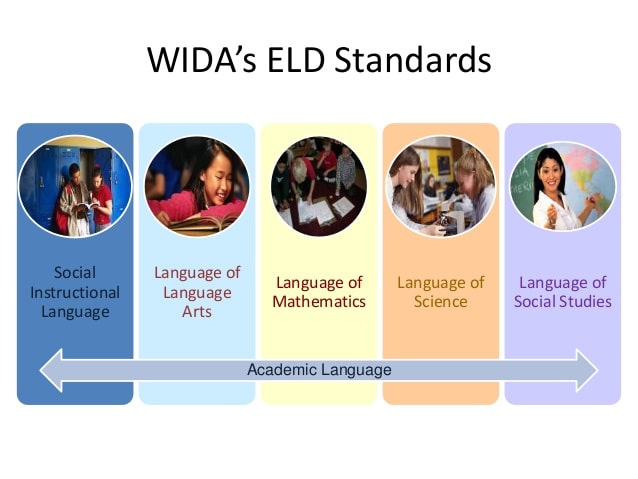What Does WIDA Stand For?
World-class Instructional Design and Assessment is the abbreviation of WIDA.
WIDA Standards are criteria intended to help quantify the academic progress of English language learners. Keep reading for more information on these standards and how they’re used in the classroom.
WIDA Standards
To provide excellent instruction to English language learning students, the World-Class Instructional Design & Assessment (WIDA Standards) consortium has developed 5 English Language Development (ELD) Standards to help students understand English in both a social and academic context.
Most recently updated in 2012, these standards focus on specific and general language areas and are organized by domain, tier cluster, and framework.
The first of WIDA standards (Social & Instructional Language) focused on building communication skills required for basic social and instructional interactions within an English-speaking classroom.
After learning the most fundamental elements of the English language, pupils will be expected to use these abilities to obtain knowledge in different subject areas. Standards 2-5 pay the following:

#1: The Language of Language Arts
#2: The Language of Mathematics
#3: The Language of Science
#4: The Language of Social Studies
Standards 2-5 concentrate on the language of education when it comes to particular content and subjects. This may include vocabulary, speaking structures, conventions, and also a more formal register. Also Check – How to Find Molar Mass Of A Compound, Element, Gas
WIDA Standards For Language Domains
To better ensure the quality of education and measure a student’s academic progress, WIDA standards are broken down into four language domains, each of which focuses on a specific facet of the English language. All those domains include skills specific to this particular branch of speech:
Reading: For this category, students are expected to use their language skills to translate and understand written text.
Composing: ELL students should use their language skills to share their thoughts and opinions through written communication. This domain is extremely varied and requires pupils to write for numerous different audiences and situations.
Discussing: Maybe the most significant domain, this element focuses on a student’s ability to communicate verbally.
Listening: much like the Reading domain, this skill area concentrates on using passive skills as pupils hear, process, and translate spoken words and commands.
Grade Clusters
WIDA standards arrange students based on their grades. Kindergarten through 8th grade features an Exceptional set for each tier, although high school pupils are grouped into two clusters: grades 9-10 and 11-12
Model Performance Indicators (MPIs)
To give examples of what is expected of students, WIDA criteria include Model Performance Indicators, also known as MPIs. These indicators are only meant to be examples, not rigidly defined instructions.
Every MPI contains three strands: integrated, expanded, and complementary. The integrated strand illustrates how units of instruction incorporate all four language domains. The expanded strand demonstrates how attributes of academic language may be used in all academic settings, such as reading classes and content subjects like math and science. The complementary strand concentrates on the use of language learning in all settings both formal and casual.
The Language of the Humanities
The Language of Technology and Engineering
The Language of Visual Arts
The Language of Music and Performing Arts
More For You: